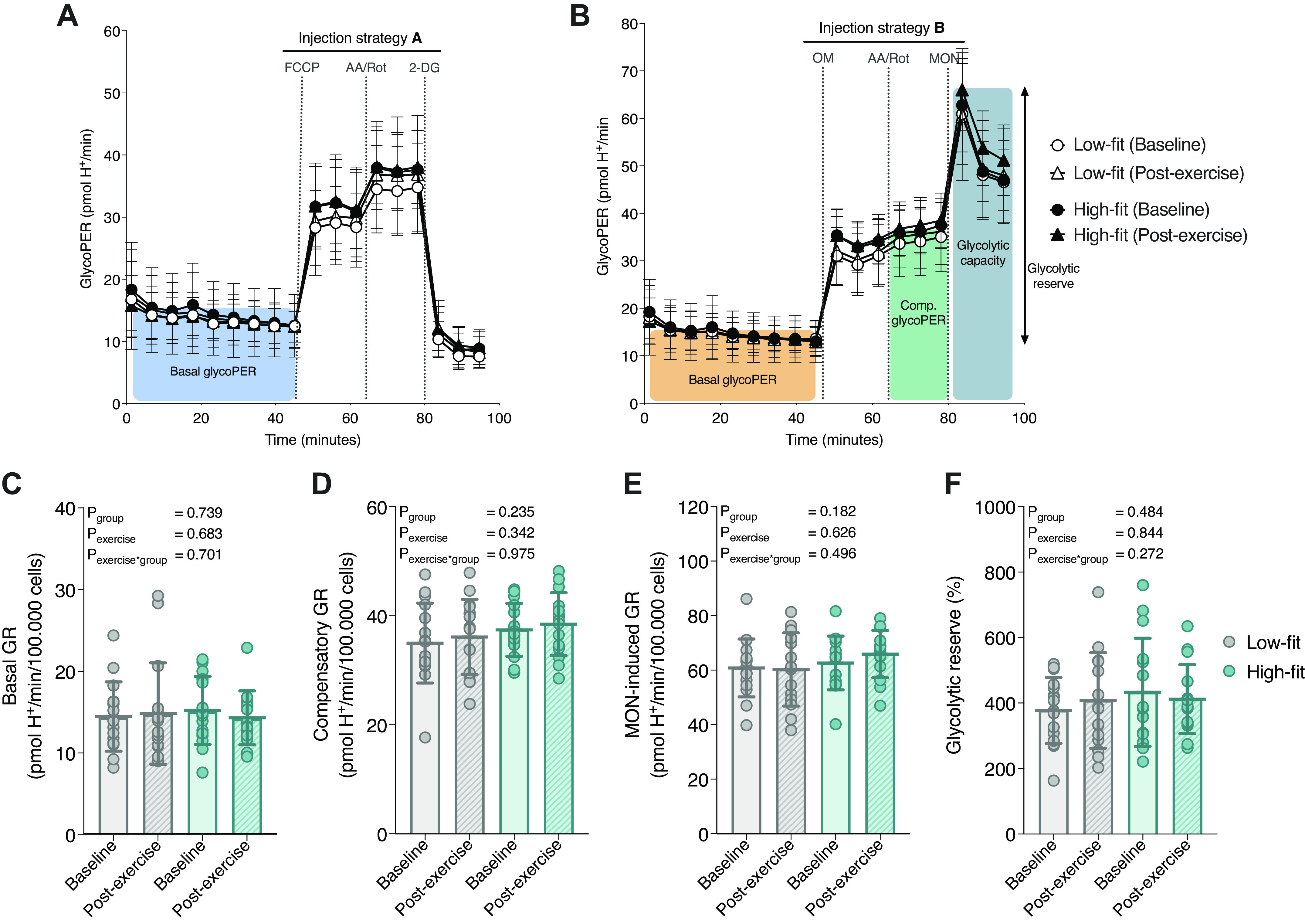Figure 3.

Glycolytic peripheral blood mononuclear cell (PBMC) function in high-fit and low-fit females at baseline and after a recent bout of exercise. Representation of glycolytic parameters derived from the extracellular flux (XF) assay using injection strategy A (A) or B (B) and traces for low-fit (n = 16, white) and high-fit (n = 15, black) females at baseline (dots) and postexercise (triangles). Basal glycolytic rate (GR, C), compensatory GR (D), monensin (MON)-induced GR (E), and the glycolytic reserve calculated as the ratio between MON-induced GR and basal GR (F). Parameters are calculated for low-fit (n = 16, gray) and high-fit (n = 15, turquoise) females at baseline (clear bars) or postexercise (striped bars). Values are depicted per 105 R-integrated pixel intensity (PIXI) analyzed cells for absolute rates or as a percentage (%) for ratios of corresponding values. Main effects (fitness level and recent exercise) and interaction effects were analyzed using repeated-measures ANOVA (RM-ANOVA). Significant P values (<0.05) are indicated in bold.
